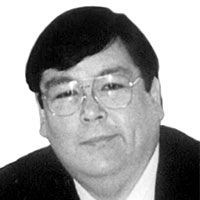A Japanese attempt to rewrite the history of the 1945 Manila carnage

The 1945 Battle for Manila where over 100,000 civilians were killed is especially close to your Chair Wrecker’s heart. Born four years after that bloody battle, I listened to stories — first hand accounts — of people who lived through that hell.
Because nobody easily forgets the hell that they went through, I saw the anguish in the faces of the people who were in the Intramuros, Ermita and Malate areas where most of the over 100,000 civilians perished. At times, I thought that their traumatic experience made them exaggerate the Manila carnage. I fully accepted that the stories were not exaggerated when I got to read reliable historical accounts of the 1945 Manila carnage.
Two of those who shared with me their personal horrifying experiences were my mother and grandmother. Mom’s family found themselves trapped in Ermita when the battle started. Together with my mother were her first husband, their two adopted sons, my grandmother and Scottish grandfather (Ian C. Trotter Macgregor, a pioneer of the Del Monte Bukidnon plantations and 1919 and 1920 Philippine Open Golf Champion).
Grandfather Ian became a casualty of the battle. He was killed on Valentine’s Day, February 14, 1945 near De La Salle College (close to the Japanese main defense line in Vito Cruz Street). Ironically, he was killed by the shell that was fired by a fellow Scot named Douglas MacArthur. Typically Celtic, Grandfather Ian died on the eve of victory.
Contrary to what most Filipinos thought — with special help from US propaganda — most of the civilian casualties were the victims of ‘friendly’ US cannon fire. The victims of Japanese atrocities numbered in the thousands but these casualties were outnumbered by US shelling which didn’t distinguish combatants from non-combatants.
The civilian victims of US shelling were unintended. US shells were fired from far away and it was not possible to check if the area was free of potential civilian casualties. However, this does not absolve the US commanders from the high civilian casualties of their indiscriminate shelling.
The same could not be said about the victims of Japanese atrocities. Japanese atrocities were committed up close and personal. Unlike the American artillery men who could not see the places where their shells will explode, the Japanese were eyeball to eyeball with their civilian victims.
Recently, the History Asia Channel featured a replay of the two-hour documentary, produced by the NHK Network of Japan, titled “Remembering the Battle of Manila.”
The documentary was well-produced in the aspect of cold, impassioned writing and in selecting a credible array of resource persons from the US and Japanese surviving combatants as well as surviving Filipino civilians. As many previous documentaries were produced from the perspective of the victors, this one offered more insights to the Japanese side of the battle.
I share the assertion of many historians that General Douglas MacArthur railroaded the trial and conviction of Japanese General Tomoyuki Yamashita to cover up the civilian casualties of US shelling. Cut in the mold of George A. Custer of the Little Big Horn blunder, MacArthur was forever posing for history. He must have realized how the civilian deaths will blemish his name in history.
Gen. Yamashita clearly vacated Manila and ordered that it be declared an Open City. However, the Japanese Navy which took over the city decided to make a desperate stand when they found themselves boxed in by advancing US forces from the North and South. The Japanese Code of Bushido prescribes suicidal death rather than surrender.
The NHK documentary was less than honest in this regard as they craftily downplayed the commission of Japanese atrocities. Rather than admit that a wild rampage of rape and carnage took place, they attempted to establish an excuse for the killing of so many civilians — the difficulty to separate Filipino guerillas operating in the city from civilian non-combatants.
The NHK documentary harped on Filipinos exacting reprisals on the Makapilis (hooded Filipino traitors who pointed out Filipino guerillas to the Japanese authorities) but never recounted the brutal and inhuman acts the Japanese committed against civilian non-combatants. Save for one Japanese soldier who cried when he recalled the horrors they inflicted, the writers of the NHK documentary did not mention the beheadings, wholesale massacres of families, the impalement of babies hurled up in the air and so forth that happened.
The Japanese have consistently tried to remove the stains of the shame they painted upon themselves when they went into the 1942 to 1945 Pacific War. The Germans have never tired of flagellating themselves for the sins of Adolf Hitler and his Nazi gang but the Japanese would not have any of that.
The NHK documentary was another such attempt to wash clean the Japanese national shame. Produced for the Japanese audience, it was translated for other markets for residual values and revenues.
Many nations, especially those who suffered under the Japanese, protested the attempt to rewrite World War II Japanese history. More than the need to remind the Japanese nation of their crimes, it is the fear that loss of memory is the best promoter of a potential repeat of those crimes.
* * *
Chair Wrecker e-mail and website: [email protected] and www.chairwrecker.com
- Latest
- Trending




























